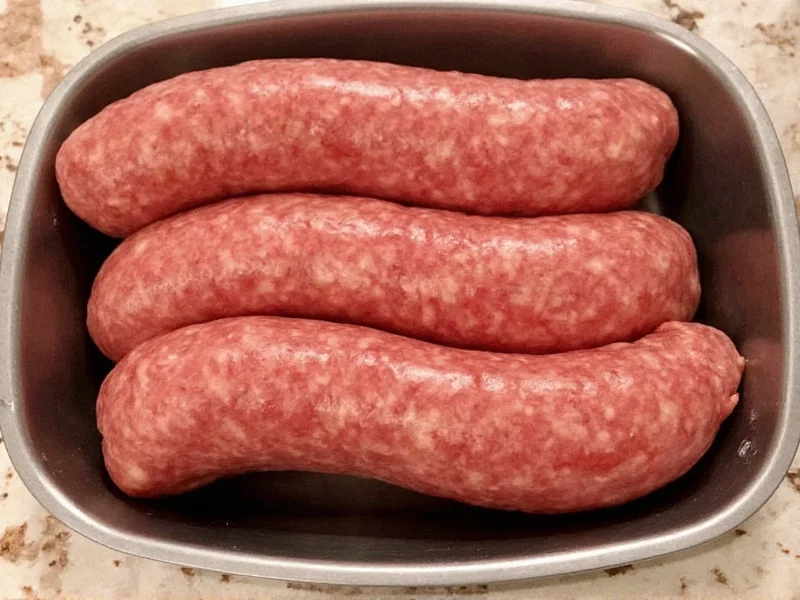When searching for information about this breakfast staple, consumers typically want to understand its composition, cooking methods, and practical applications. This comprehensive guide provides factual details about Jimmy Dean's maple-flavored sausage product line based on verified product information and culinary expertise.
Understanding Jimmy Dean Maple Sausage Products
Jimmy Dean offers several maple sausage variations that cater to different consumer preferences. The standard maple sausage comes in both link and patty forms, with the company also producing a lower-fat version for health-conscious consumers. All maple-flavored products contain real maple syrup flavoring rather than artificial maple taste, contributing to their distinctive sweet-savory profile.
The ingredient list typically includes:
- Pork
- Water
- Maple syrup flavor
- Salt
- Spices
- Sugar
- Sodium phosphate
- Natural flavors
- Sodium diacetate
- Sodium erythorbate
- Sodium nitrite
Nutritional Profile Analysis
Understanding the nutritional content of maple-flavored sausage is essential for making informed dietary choices. A standard serving (54g) of Jimmy Dean original maple sausage contains:
| Nutrient | Amount per Serving | % Daily Value |
|---|---|---|
| Calories | 170 | - |
| Total Fat | 14g | 18% |
| Saturated Fat | 5g | 25% |
| Cholesterol | 40mg | 13% |
| Sodium | 520mg | 23% |
| Total Carbohydrate | 1g | 0% |
| Sugars | 1g | - |
| Protein | 7g | - |
The maple flavoring contributes minimal sugar content compared to the overall nutritional profile. Those following specific dietary restrictions should note that this product contains pork and is not suitable for halal, kosher, or vegetarian diets. The lower-fat maple sausage option reduces total fat to 8g per serving while maintaining the distinctive maple flavor.
Optimal Cooking Methods and Temperature Guidelines
Proper preparation ensures the best texture and flavor from Jimmy Dean maple sausage. Unlike raw sausage products, these are fully cooked and only require heating. The recommended internal temperature for serving is 165°F (74°C) to ensure food safety while preserving moisture.
Three effective cooking methods include:
- Skillet method: Heat medium skillet over medium heat. Add sausage and cook for 10-12 minutes, turning frequently until evenly browned and heated through.
- Oven method: Preheat oven to 350°F (175°C). Place sausage on baking sheet and heat for 12-15 minutes until thoroughly warmed.
- Microwave method: Place sausage on microwave-safe plate, cover with paper towel, and heat on HIGH for 45-60 seconds per patty or link.
Avoid overcooking, which can cause the sausage to become dry and crumbly. The natural maple flavor pairs exceptionally well with eggs, pancakes, and breakfast potatoes.
Creative Recipe Applications Beyond Breakfast
While primarily marketed as a breakfast item, maple sausage offers versatility in various culinary applications. The subtle sweetness complements both traditional breakfast dishes and more innovative recipes.
Consider these preparation ideas:
- Chop and incorporate into breakfast casseroles or stratas
- Add crumbled sausage to maple-glazed sweet potato hash
- Wrap sausage links in crescent roll dough for savory pastries
- Include in breakfast burritos with scrambled eggs and cheese
- Pair with apple slices for a sweet-savory combination
For meal prep enthusiasts, cooked and cooled maple sausage freezes well for up to three months. Simply portion into freezer bags, removing excess air before sealing. Thaw overnight in the refrigerator before reheating.
Storage Recommendations and Shelf Life
Proper storage maintains both safety and quality of Jimmy Dean maple sausage products. Unopened packages remain fresh in the refrigerator until the printed expiration date, typically 7-10 days from purchase. Once opened, consume within 3-4 days.
For extended storage:
- Freeze unopened packages up to 2 months beyond expiration date
- Portion cooked sausage into meal-sized containers before freezing
- Use heavy-duty freezer bags with air removed to prevent freezer burn
- Thaw frozen sausage in the refrigerator overnight, not at room temperature
Always inspect sausage before consumption. Discard if you notice any off odors, slimy texture, or discoloration. Properly stored maple sausage should maintain its distinctive sweet aroma and firm texture.
Comparing Maple Sausage Varieties
When selecting between different maple sausage options, consider these factors:
| Product Variation | Calories (per serving) | Fat Content | Special Features |
|---|---|---|---|
| Original Maple Sausage | 170 | 14g | Classic sweet-maple flavor |
| Lower Fat Maple Sausage | 120 | 8g | Reduced fat with same maple taste |
| Maple Sausage Singles | 170 | 14g | Individually wrapped convenience |
| Maple Sausage Bites | 170 | 14g | Bite-sized for recipes and snacks |
The maple flavor intensity remains consistent across product lines, with variations primarily affecting fat content and convenience features rather than taste profile. The maple sausage bites work particularly well for recipes requiring smaller sausage portions.











 浙公网安备
33010002000092号
浙公网安备
33010002000092号 浙B2-20120091-4
浙B2-20120091-4